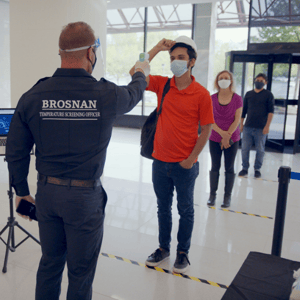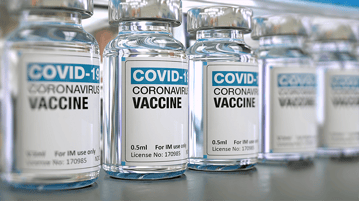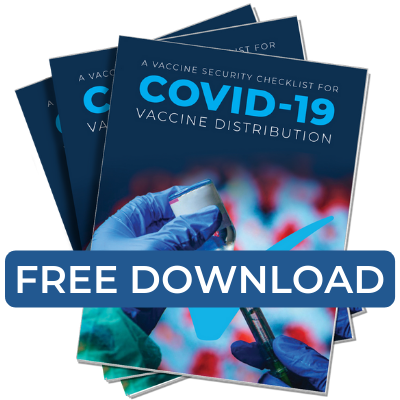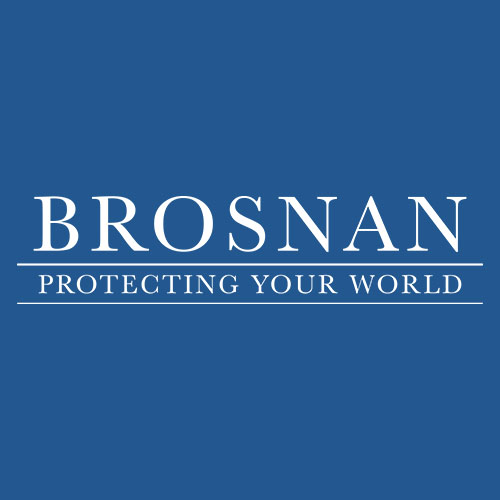Operation Warp Speed (OWS) is a key pillar of President Trump’s strategy for fighting the COVID-19 pandemic in the United States. It is a historic effort to deliver cutting-edge vaccines, therapeutics, and diagnostics to the American people in record time. Since January 2020, all of the government and private industry organizations involved in Operation Warp Speed, have been moving heaven and earth to wring out all of the inefficiencies in the process of developing a vaccine, proving its viability, and creating safe pathways for its distribution to those that need it.
 Bringing a safe and viable vaccine to the public has never been attempted in this timeline or scale. Safety has been a guiding principle of OWS – not just from a medical perspective – but also from a security perspective. Getting the vaccine to citizens that need it in a safe and secure manner will take careful thought, planning and execution, and experts in the security services industry are also preparing for increases in manpower and security technologies to aid in this monumental effort.
Bringing a safe and viable vaccine to the public has never been attempted in this timeline or scale. Safety has been a guiding principle of OWS – not just from a medical perspective – but also from a security perspective. Getting the vaccine to citizens that need it in a safe and secure manner will take careful thought, planning and execution, and experts in the security services industry are also preparing for increases in manpower and security technologies to aid in this monumental effort.
The COVID-19 Vaccine Distribution Challenge
Throughout the year, we have heard the news that multiple agencies and pharmaceutical companies, including Pfizer, AstraZeneca, Moderna, and Johnson & Johnson, were working night and day on developing a vaccine to combat the coronavirus causing COVID-19. On November 9th, 2020, Pfizer announced that they had developed a COVID-19 vaccine that they analyzed to be more than 90% effective in preventing the disease among trial volunteers who had no evidence of prior coronavirus infection. Less than a week later, Moderna announced that they were seeing similar results in the human trials of their vaccine.
Both Pfizer and Moderna have been submitted to the FDA for emergency authorization to distribute their vaccines. As of this week, Pfizer's application has been approved and Moderna's application is expected to pass before the end of December, which means that the next challenge for both vaccines now is transporting them to their final destinations for public use. According to the pharmaceutical companies, these vaccines must be transported and stored at below freezing temperatures—minus 4 degrees Fahrenheit for Moderna, and 94 degrees below for Pfizer. Moving the vaccine supply throughout the United States for distribution will require a network of special technology, equipment, experts and facilities – collectively referred to as “cold chain distribution.” Pfizer’s inventory will most likely pass through their secure storage sites in Michigan and Wisconsin as the wait for final shipment to their distribution and administration sites.
Security Considerations for the Distribution and Administration of the COVID-19 Vaccine
From a security standpoint, there are still many challenges in transporting, storing, and administering the COVID-19 vaccine. For the pharmaceutical companies, cyber-security has already been an issue with cold chain distribution companies already coming under attack by hackers. As the vaccines make their way from manufacturing centers to their intended markets, world security experts are already predicting the possibility of security issues including corporate espionage, theft, and civil unrest due to supply management and socio-political issues surrounding the subject of who will get the vaccine first and why.

On November 12th, the U.S. Department of Health and Human Services (HHS) and the Department of Defense (DoD) announced partnerships with large chain pharmacies and networks that represent independent pharmacies and regional chains. This program covers approximately 60 percent of pharmacies throughout the 50 states, the District of Columbia, Puerto Rico, and the U.S. Virgin Islands. Independent pharmacies and regional chains will also be part of the federal pharmacy program, further increasing access to vaccine across the country—particularly in traditionally underserved areas. FedEx and UPS have been enlisted to safely transport specially designed thermal shippers from Pfizer’s storage sites in the mid-West to 64 states, territories, and major cities across the nation. Both companies already have extensive healthcare logistics resources at their disposal, including capabilities and systems that allow for the special handling of fragile medical products, including networks of freezers.
Aside from the challenge of moving the vaccines from their manufacturing points to their intended distribution sites, there also lies the challenge of keeping the vaccine inventory, the distribution staff (doctors, nurses, pharmacy technicians), and the citizens awaiting treatment safe as well. Proactively, the Centers for Disease Control and Prevention (CDC) has already made recommendations to vaccine distribution centers to consider using uniformed security guards to assist in managing crowds and to designate a space or system to secure vaccine inventory and to protect clinic staff and their valuables.
Securing Your Vaccine Distribution or Administration Center
Proactive staffing and training are your best strategies for running a safe Vaccine Distribution Center. The CDC gives guidelines to who should be on staff and what their roles should be. From greeters and screeners to intercept clinic clients outside the clinic area and direct clinic flow to medical personnel further evaluate clients who indicate they might have a contraindication; every role should be well thought out and purposeful.
It is important to not underestimate the importance of security personnel including security guards, security officers, social distancing officers, vaccine supply officer and mask compliance officers. Security guards should be considered to ensure an orderly flow of traffic and parking at the clinic site, to assist in maintaining orderly movement of vaccine recipients through the clinic’s vaccination process, to provide necessary control if persons become disorderly, or to assist supply officer in maintaining security of vaccines and other clinic supplies. Security Staff can be off-duty law enforcement officers or professional security guards who are experienced and trained in crowd control.
Early in the national COVID-19 vaccination program, especially during the recent spike in infections, the level of risk perceived by the public may be extreme. In these circumstances, state and local public health officials should be prepared for a high level of demand for vaccine by the public. Likewise, state, local and contract law and security agencies should be prepared for traffic and crowd control near vaccination clinics.
If you are running a COVID-19 Vaccination Center (pharmacy, hospital, clinic, temporary vaccination center or mobile vaccination site) and would like to learn more about the security issues that should be considered in administering the COVID-19 vaccine, please download the Vaccine Security Checklist for COVID-19 Vaccine Distribution Center.
Thanks for reading!
Download the Security Checklist for COVID-19 Vaccination & Distribution Centers
Would you like a security services quote? Let us know how we can help!



